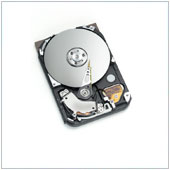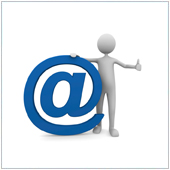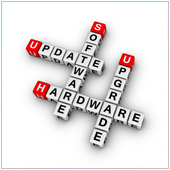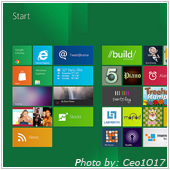 When it comes to computers, one of the main components is the operating system (OS). It allows users to communicate with the computer in a way that we can understand. Arguably the most popular OS is Microsoft's Windows. Windows 8 was released last year and brought with it a drastic change to the Windows environment. This change has a bit of a learning curve, for example, finding out how much space your hard drive has, or a file takes up, can be a bit challenging.
When it comes to computers, one of the main components is the operating system (OS). It allows users to communicate with the computer in a way that we can understand. Arguably the most popular OS is Microsoft's Windows. Windows 8 was released last year and brought with it a drastic change to the Windows environment. This change has a bit of a learning curve, for example, finding out how much space your hard drive has, or a file takes up, can be a bit challenging.
Here's three ways you can see how much space programs are taking up in Windows 8. Before you check file sizes however, you should be aware whether these are shown in bytes, KB, MB, GB or TB.
- Bytes are the smallest measurement you will see, and are made up of eight bits (a combination of 8 1s or 0s).
- A KB is a Kilobyte and is around 1,000 bytes (1,024 to be exact).
- A MB - Megabyte - is around 1,000KB.
- A GB - Gigabyte - is around 1,000MB.
- A TB - Terabyte - is around 1,000GB.
3 ways to check file size 1. Easy - If you have an individual file or folder that you would like to know the size of, simply right click on it and select Properties. Under the General tab, look for the box that says Size and Size on Disk. The number beside these fields should be in KB, MB or GB. 2. Slightly less easy - First you need to open your PC Settings - move your mouse to the top-right corner of the screen and select Settings followed by Change PC settings. From there click on General and scroll down until you see Available storage. The number is the amount of space you have left, and pressing on View app sizes will bring up a list of all installed apps and the amount of space they take up. 3. Still easy, but harder than the other two - Open the Control Panel - move your cursor to the bottom left of the screen and search for: Control Panel. Click on Programs followed by Programs and Features. Look at the column labeled Size and a program's size should be listed. If you can't see it try maximizing the window. If you click on a program, you should see more information about it, including its size in the bottom right.
If there is no information about size, search by moving your mouse to the bottom left and entering the file's name. From there you can follow step one above.
Windows 8 has many interesting features, but they will take time to figure out. If you are looking to integrate this OS into your business, or would like to learn more about how to use it, effectively please contact us today.

 Microsoft has an exciting fourth quarter of 2012 ahead. The impending release of Windows 8 is being met with mixed thoughts by pundits, and there are a ton of new features that could essentially change how we use computers. Some of these features focus on enabling businesses to adopt a Bring Your Own Device (BYOD) solution.
Microsoft has an exciting fourth quarter of 2012 ahead. The impending release of Windows 8 is being met with mixed thoughts by pundits, and there are a ton of new features that could essentially change how we use computers. Some of these features focus on enabling businesses to adopt a Bring Your Own Device (BYOD) solution. 2012 is shaping up to be a really big year for tech giant Microsoft. With the impending release of Windows 8, nearly every Microsoft product and service is receiving an update to both its visuals and features. One of the latest changes Microsoft has made is with its aging Hotmail. The change is a massive one, and it appears to be for the better.
2012 is shaping up to be a really big year for tech giant Microsoft. With the impending release of Windows 8, nearly every Microsoft product and service is receiving an update to both its visuals and features. One of the latest changes Microsoft has made is with its aging Hotmail. The change is a massive one, and it appears to be for the better. It’s rumored that later this year, most likely in October, Microsoft will release its latest operation system, Windows 8. While a preview version has been available for a number of months, many users have been curious as to how much they’re going to have to pay to upgrade. Microsoft recently announced the cost to upgrade to both Windows 8 and Windows Server 2012.
It’s rumored that later this year, most likely in October, Microsoft will release its latest operation system, Windows 8. While a preview version has been available for a number of months, many users have been curious as to how much they’re going to have to pay to upgrade. Microsoft recently announced the cost to upgrade to both Windows 8 and Windows Server 2012. One of the hottest trends of 2012 is cloud storage. Managers and employees are enamored with the idea of being able to work together and share documents from anywhere. To make storage and collaboration in the cloud a little easier, Microsoft recently upgraded their SkyDrive service to meet their users’ needs.
One of the hottest trends of 2012 is cloud storage. Managers and employees are enamored with the idea of being able to work together and share documents from anywhere. To make storage and collaboration in the cloud a little easier, Microsoft recently upgraded their SkyDrive service to meet their users’ needs. Microsoft is a company that’s well-known for releasing many different versions of the same operating system. With the impending release of Windows 8, they’re aiming to slim down the number offered. There will be a core set of features available across all editions, with each version aimed at different markets.
Microsoft is a company that’s well-known for releasing many different versions of the same operating system. With the impending release of Windows 8, they’re aiming to slim down the number offered. There will be a core set of features available across all editions, with each version aimed at different markets.  Twitter, Facebook, Instagram, Pinterest, Google+, are the foundations of social media. Together, these sites have made it possible for social networking to really take hold and take off. As with any popular platform, you start to see trends that are evident across all networks. One of the most popular trends is the use of the hashtag (#). But what exactly is it, and can your company use it?
Twitter, Facebook, Instagram, Pinterest, Google+, are the foundations of social media. Together, these sites have made it possible for social networking to really take hold and take off. As with any popular platform, you start to see trends that are evident across all networks. One of the most popular trends is the use of the hashtag (#). But what exactly is it, and can your company use it? On February 29, 2012 Microsoft will launch a Customer Preview of its new Operating System, Windows 8. The Customer Preview, commonly called a Beta, is a pre-release product aimed to let Windows users test and learn the operating system before the release of the retail version, scheduled for late 2012. The OS has been driving lots of interest and businesses are eager to get their hands it. But the big question is, what features does it have that will help my business?
On February 29, 2012 Microsoft will launch a Customer Preview of its new Operating System, Windows 8. The Customer Preview, commonly called a Beta, is a pre-release product aimed to let Windows users test and learn the operating system before the release of the retail version, scheduled for late 2012. The OS has been driving lots of interest and businesses are eager to get their hands it. But the big question is, what features does it have that will help my business?
